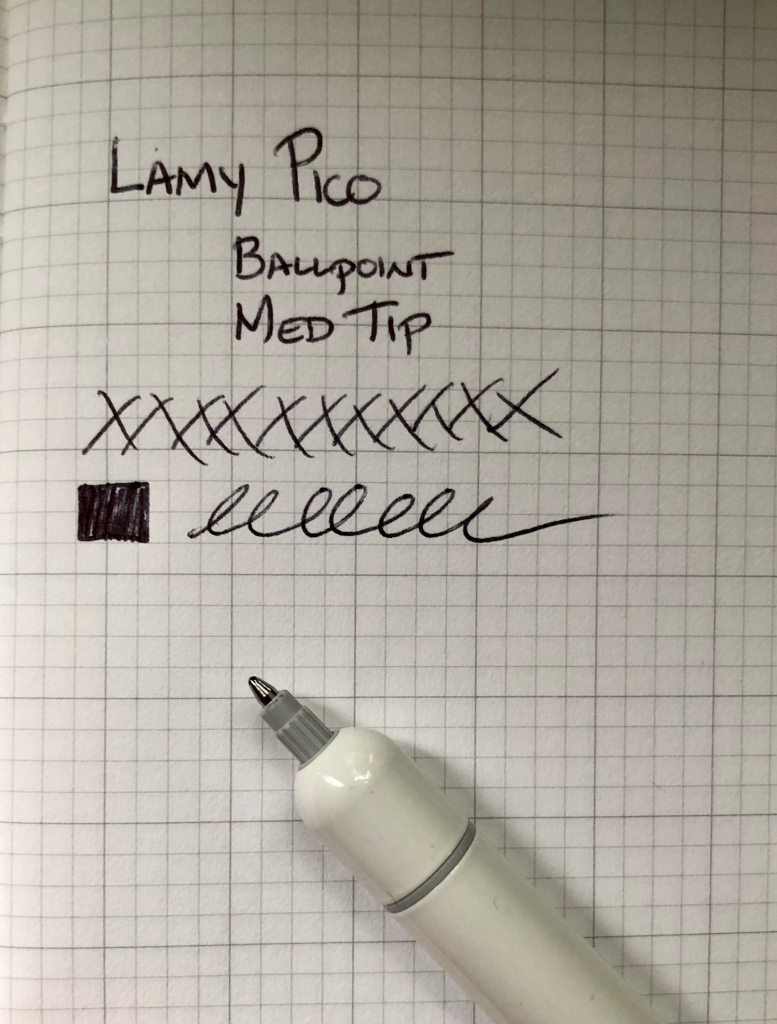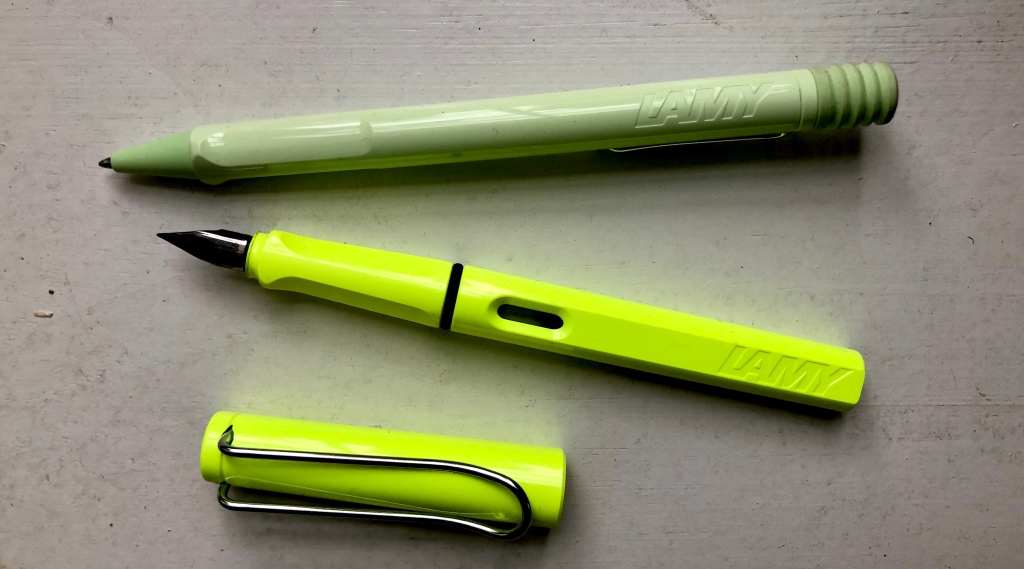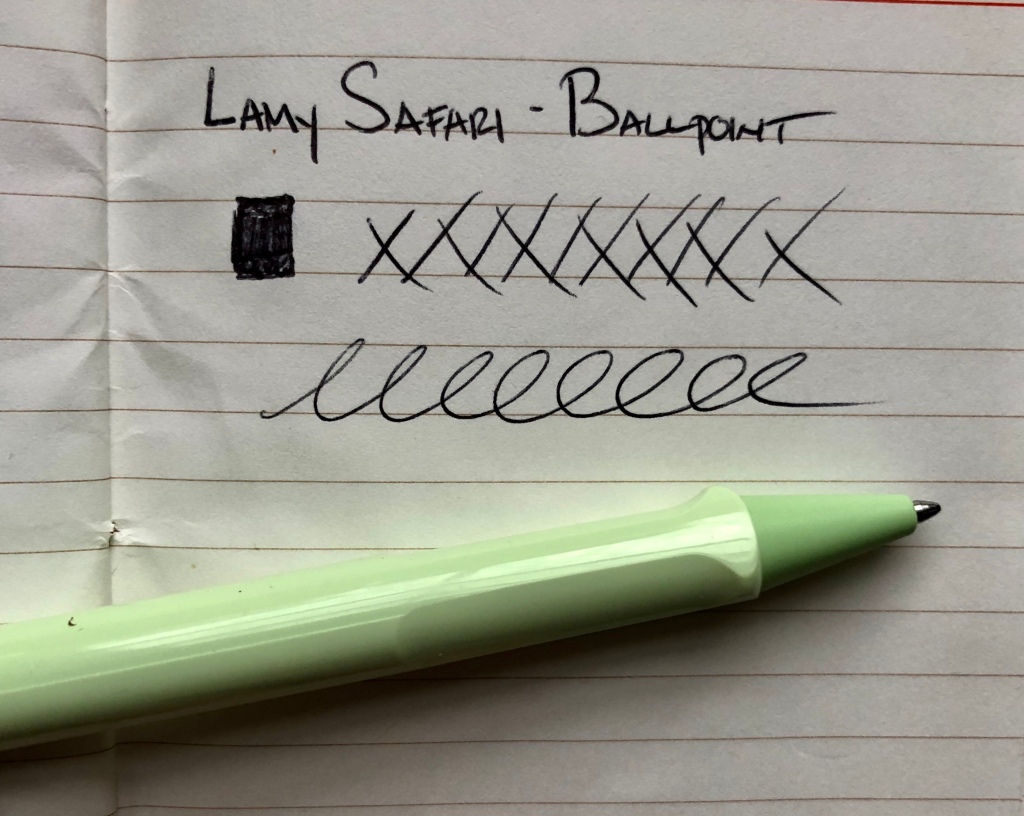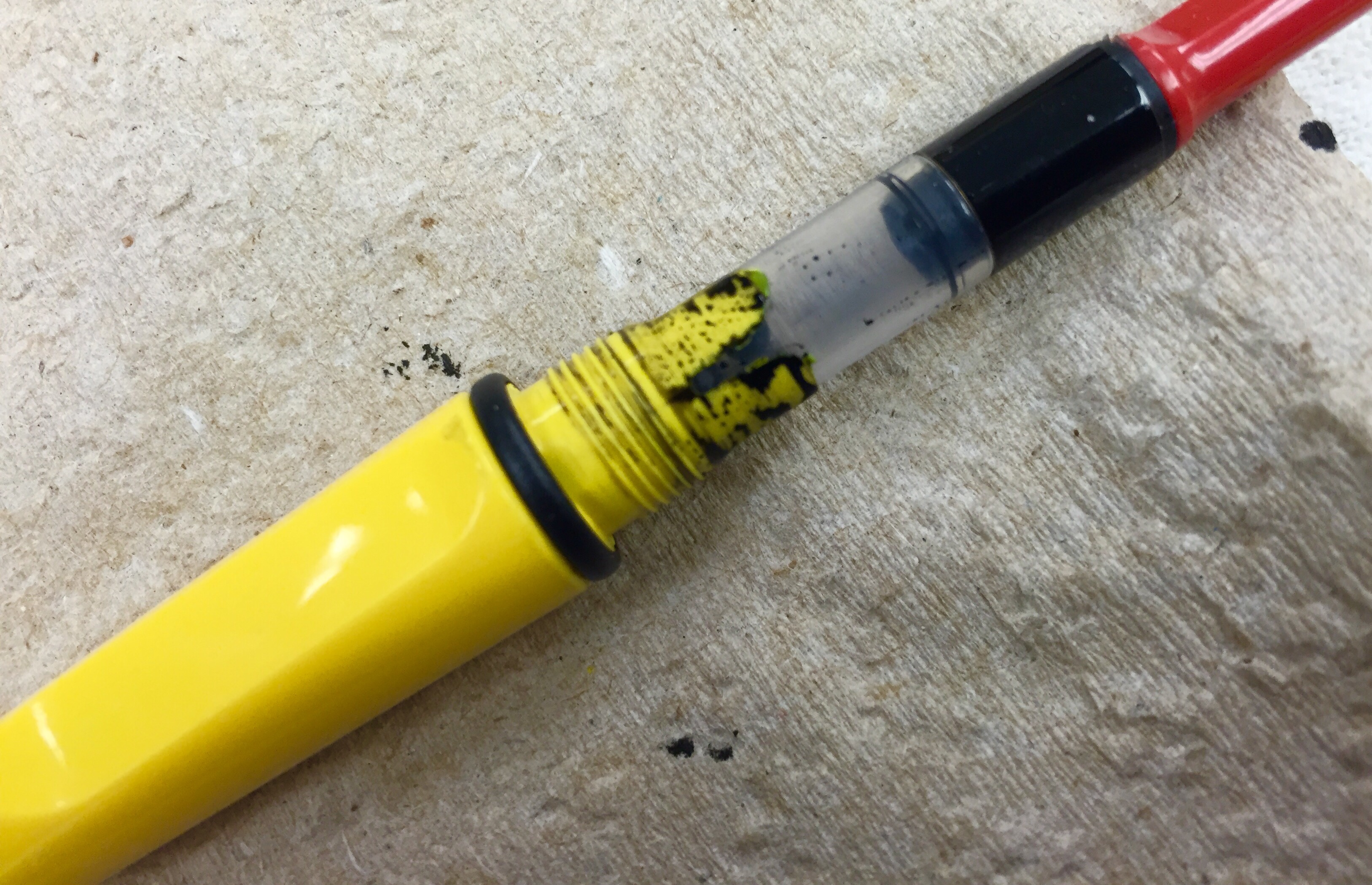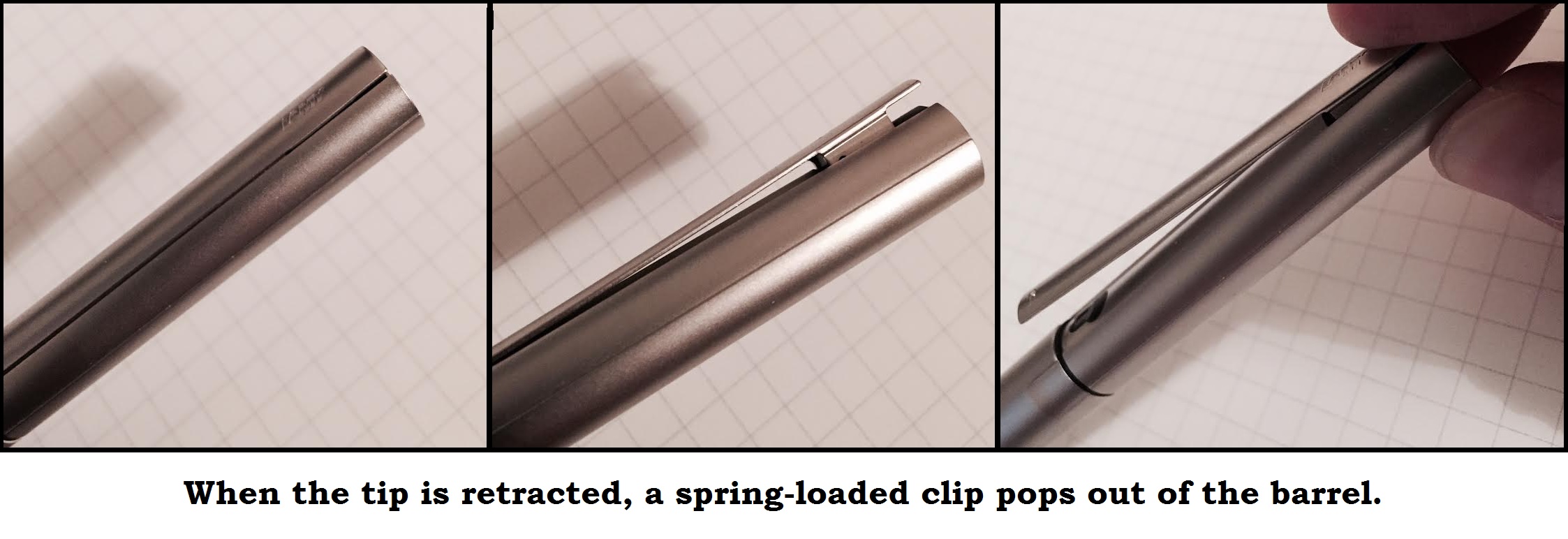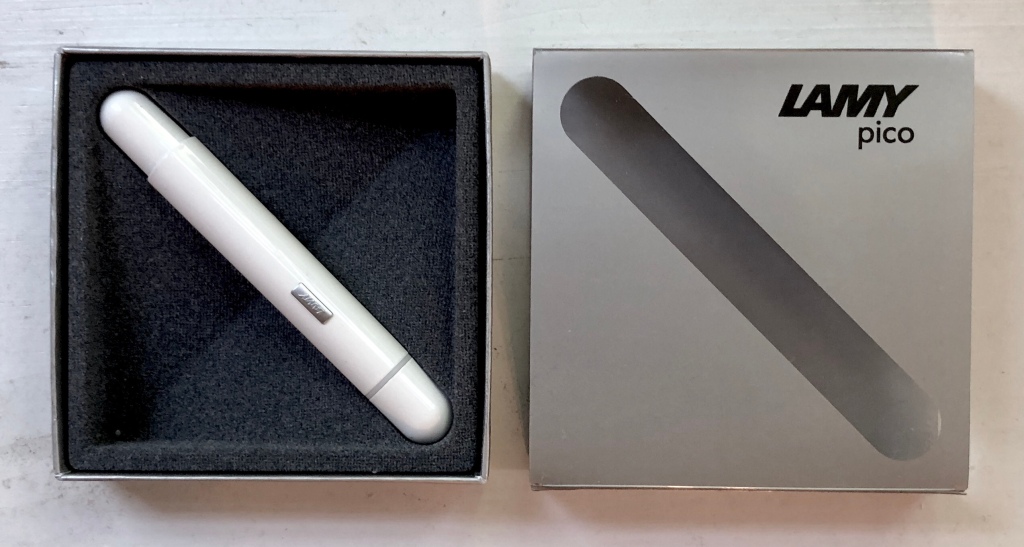
If you dig through this blog, you will probably notice that my experience with Lamy pens have been good and bad and good and bad. But, no matter what happens, I keep coming back because Lamy has a knack for producing some of the most interesting and unique pen designs around. The Lamy Pico typifies this, and, luckily, it manages to be one of Lamy’s better efforts.
The Pico is an expandable pocket pen. All closed up, it measures a mere 3.75” in length, but press down the end to eject the tip and the barrel expands to a full 5”. On paper that might not seem like much, but it feels a bit magical as it transforms from something that can fit in your fist to a normal, nicely balanced pen.
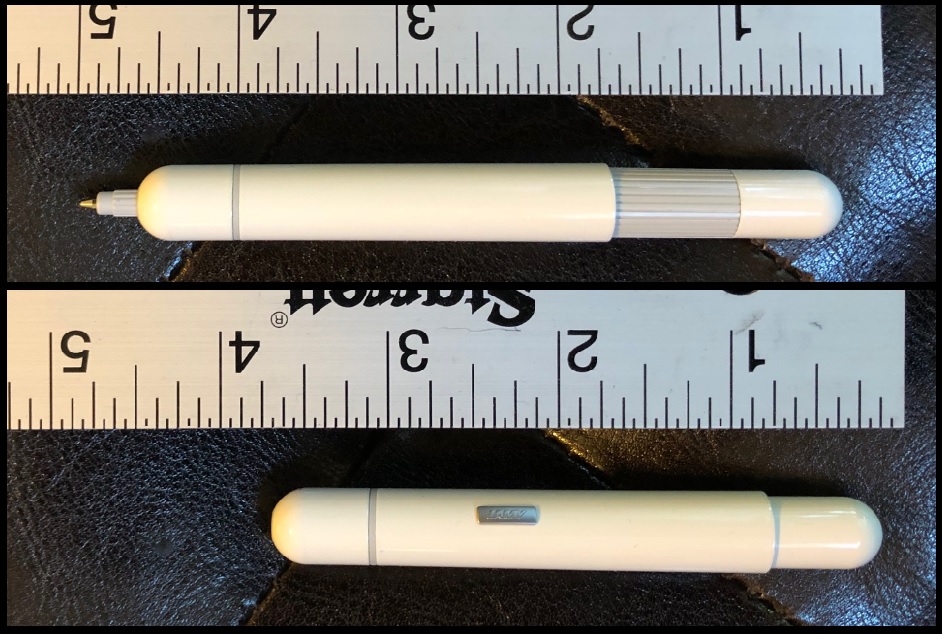
The Pico’s body is constructed of metal but is coated in a smooth enamel-ish material that, in typical Lamy fashion, is available to buy in a bunch of color coatings. My lovely wife bought me the white version as a Christmas gift last year, and it has a very minimalist and clean look. Admittedly, in its closed-up form, it somewhat resembles a tampon applicator.
One small (but important) detail is the small, gray nub on the side of the barrel. One reason it’s there is to display Lamy’s logo, but it’s primary function is to act as a roll-stopper. One of my pet peeves is a perfectly round pen that will simply roll off your desk when you set it down. Most pens have clips to prevent this, bit since the Pico is clip-less, Lamy has smartly included this little protrusion that does a decent job of roll-prevention.
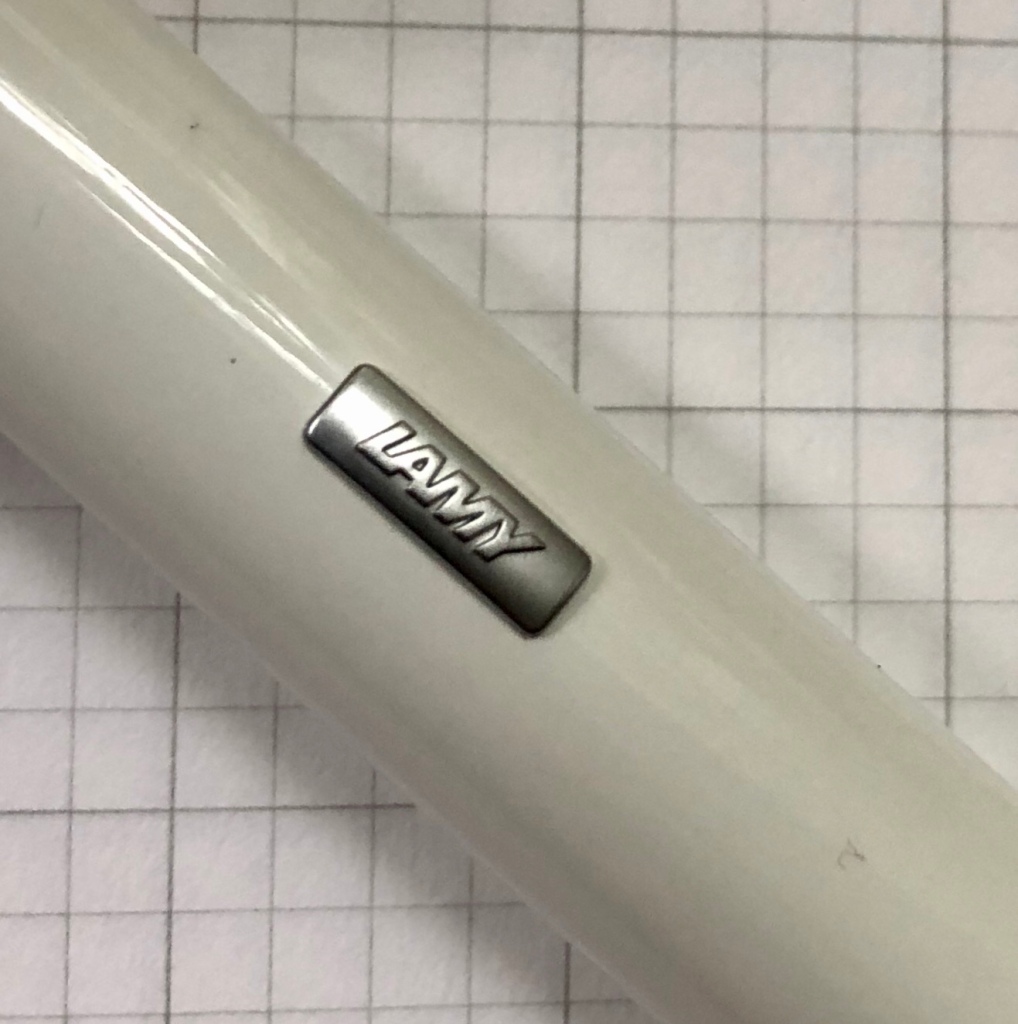
I really only have one point of criticism: the refill. The pico uses a proprietary Lamy M22 ballpoint refill, and though I don’t like the concept of proprietary refills, I understand that they may have needed something special for this pen’s size. My real problem is that the refill just isn’t all that good.
It’s not a bad refill either. It’s moderately smooth and should last for quite a while, but it skipped out enough to be annoying. I suppose I just think that for a pen that usually retails for $30-$40, it should have something much better.
Still, I think this is a great pocket pen. The retracting mechanism is fun to use, and it has a high build quality. I definitely recommend it.
